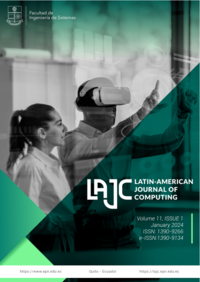Pappus-Guldin theorems applied to the study of solid modeling with GeoGebra software
Keywords:
Numerical simulation, GeoGebra, Spline, Pappus-Guldin theoremsAbstract
In this work, we use Geogebra software to simulate the shape of objects (solids) in three dimensions from their photo and real dimensions using spline interpolation. With the reconstructed object, we analyze its volume and surface area using the Pappus-Guldin Theorems (PGT), the theorems that use mathematical analysis ideas to describe the volume and surface area by the sectional area and by the contour curve of the object. In the simulations, we tested the verification of the modeling for known solids (sphere and torus) and then analyzed some objects used in the industry, such as the packaging of products, pet bottles, yogurt containers, coffee powder packaging, aluminum soda cans, and the packaging of chocolate powder. We also analyzed some objects created by rotating bodies, such as the shape of a jar and an aluminum barrel, and also shapes found in nature, such as the shape of a pear and an egg. Modeling allows us to better understand the packaging used in the industry to minimize manufacturing costs and maximize its utility. Thus, we can modify these packages to obtain the best development of how these products are presented to the public, optimizing its format by analyzing its surface and its volume.
Downloads
Published
Issue
Section
License
Copyright Notice
Authors who publish this journal agree to the following terms:
- Authors retain copyright and grant the journal right of first publication with the work simultaneously licensed under a Creative Commons Attribution-Non-Commercial-Share-Alike 4.0 International 4.0 that allows others to share the work with an acknowledgement of the work's authorship and initial publication in this journal.
- Authors are able to enter into separate, additional contractual arrangements for the non-exclusive distribution of the journal's published version of the work (e.g., post it to an institutional repository or publish it in a book), with an acknowledgement of its initial publication in this journal.
- Authors are permitted and encouraged to post their work online (e.g., in institutional repositories or on their website) prior to and during the submission process, as it can lead to productive exchanges, as well as earlier and greater citation of published work.
Disclaimer
LAJC in no event shall be liable for any direct, indirect, incidental, punitive, or consequential copyright infringement claims related to articles that have been submitted for evaluation, or published in any issue of this journal. Find out more in our Disclaimer Notice.










